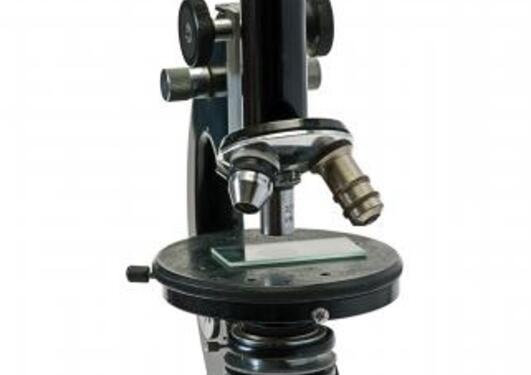Vaccines for childhood diarrhea in low- and middle-income countries
Diarrhea is one of the main causes of ill health, malnutrition, and death among young children living in low- and middle-income countries. One of the most important causes of diarrhea among these children is infection with enterotoxigenic Escherichia coli (ETEC) strains that secrete the heat-stable toxin, ST. Despite over 40 years of substantial efforts to develop vaccines against ETEC, no effective vaccines have so far been developed. The main goal has been to contribute to the development of a new ETEC vaccine that could induce protection against the toxic activities of ST itself, and we have now developed a candidate that, following toxicologic evaluation, could be ready for testing in humans.

Main content
According to the World Health Organization enterotoxigenic E. coli (ETEC) is responsible for 280- 400 million yearly episodes of diarrhea, many of which lead to malnutrition, and about 380 000 deaths annually. Most of the victims are children less than 5 years of age living in low- and middle-income countries. This makes ETEC one of the most important enteropathogens in impoverished children.
ETEC is transmitted by the fecal-oral route, whereupon it colonizes the small intestine. Adhesion to the intestinal epithelium is mediated by colonization factors, protein structures on the bacterial surface. The secreted heat-stable (ST) and heat-labile (LT) enterotoxins elicit net secretion of salts and water, resulting in diarrhea, in the most serious cases producing a profuse cholera-like condition.
Despite over 40 years of substantial efforts to develop vaccines against ETEC, no effective vaccines have so far been developed. We have developed a vaccine candidate that has the potential to be tested in humans.
Developing ST-based vaccines has in the past been hindered by the fact that ST is a small peptide that does not induce an immune response by itself, it has a complex structure, and it is very toxic.
Replacing amino acids in the ST molecule to make it less toxic often changes its shape, which could make it unsuitable for use in vaccines.
In addition, ST is structurally similar to the biologically active peptide hormones, uroguanylin and guanylin, complicating the process of developing vaccines that only target ST, and not the hormones.
To overcome these challenges, in ETECVac, we identified variants of ST that are
1) non-toxic,
2) structurally similar to native ST, and
3) sufficiently dissimilar to the body's own peptide hormones.
By coupling these variants to larger protein carriers, we were able to induce antibody responses in mice that hindered ST-binding to the receptor but that did not interfere with the activities of the peptide hormones.
We have obtained patent protection for these ST variants and their use in vaccines, and the next step will be to examine if the vaccine candidate is safe, first in two different animal species, and then, in humans to evaluate if it induces protection against ETEC diarrhea.
For this purpose, we have undertaken experimental infection studies in which adult volunteers were infected with different wild-type ETEC strains. The purpose of these experiments was to identify a suitable ETEC strain and a dose that will give approximately 3 out of 4 volunteers diarrhea. We have now established such a model.
When testing our vaccine candidate, we can use this setup to check whether volunteers who are vaccinated with our ST-based vaccine candidate are protected against diarrhea during infection with globally important ETEC strains.
Publications
Some papers (2014-2023);
- Vedøy, O. B, H. Steinsland, S. T. Sakkestad, H. Sommerfelt, and K. Hanevik. 2023. Strong association between diarrhea and concentration of Enterotoxigenic Escherichia coli strain TW10722 in stools of experimentally infected volunteers. Pathogens. 12, 283. https://www.mdpi.com/2076-0817/12/2/283/pdf
- Nasrin, D., W. Blackwelder, H. Sommerfelt, Y. Wu, T. H. Farag, S. Panchalingam, K. Biswas, D. Saha, M. J. Hossain, S. O. Sow, R. F. Breiman, D. Sur, A. S. G. Faruque, A. K. M. Zaidi, D. Sanogo, B. Tamboura, U. Onwuchekwa, B. Manna, T. Ramamurthy, S. Kanungo, R. Omore, J. B. Ochieng, J. O. Oundo, S. K. Das, S. Ahmed, S. Qureshi, F. Quadri, R. A. Adegbola, M. Antonio, I. Mandomando, T. Nhampossa, Q. Bassat, A. Roose, C. E. O'Reilly, E. D. Mintz, U. Ramakrishnan, H. Powell, Y. Liang, J. P. Nataro, M. M. Levine, and K. L. Kotloff. 2021. Pathogens Associated With Linear Growth Faltering in Children With Diarrhea and Impact of Antibiotic Treatment: The Global Enteric Multicenter Study. J Infect Dis. 16: jiab434. doi: https://doi.org/10.1093/infdis/jiab434
- Levine, M. M., D. Nasrin, S. Acácio, Q. Bassat, H. Powell, S. M Tennant, S. O Sow, D. Sur, A. K. M. Zaidi, A. S. G. Faruque, M. Jahangir Hossain, P. L. Alonso, R. F. Breiman, C. E. O’Reilly, E. D. Mintz, R. Omore, J. B Ochieng, J. O. Oundo, B. Tamboura, D. Sanogo, U. Onwuchekwa, B. Manna, T. Ramamurthy, S. Kanungo, S. Ahmed, S. Qureshi, F. Quadri, A. Hossain, S. K. Das, M. Antonio, D. Saha, I. Mandomando, W. C. Blackwelder, T. Farag, Y. Wu, E. R Houpt, J. J. Verweiij, H. Sommerfelt, J. P. Nataro, R. M. Robins-Browne, and K. L. Kotloff. 2019 (paper version published in 2020). Diarrhoeal disease and subsequent risk of death in infants and children residing in low-income and middle-income countries: analysis of the GEMS case-control study and 12-month GEMS-1A follow-on study. Lancet Global Health. https://doi.org/10.1016/S2214-109X(19)30541-8.
- Sakkestad, S. T., H. Steinsland, S. Skrede, K. Lillebø, D. H. Skutlaberg, A. B. Guttormsen, A. V. Zavialov, S. Paavilainen, H. Søyland, M. Sævik, A. R. Heien, M. G. Tellevik, E. M. Barry, N. Langeland, H. Sommerfelt, and K. Hanevik. 2019. A new human challenge model for testing heat-stable toxin-based vaccine candidates for enterotoxigenic Escherichia coli diarrhea – dose optimization, clinical outcomes, and CD4+ T cell responses. PLOS Neglected Tropical Diseases. https://doi.org/10.1371/journal.pntd.0007823
- Sakkestad, S. T., H. Steinsland, S. Skrede, E. Kleppa, K. Lillebø, M. Sævik, H. Søyland, A. R. Heien, M. G. Tellevik, E. M. Barry, H. Sommerfelt, and K. Hanevik. 2019. Experimental infection of human volunteers with the heat-stable enterotoxin-producing enterotoxigenic Escherichia coli strain TW11681. Pathogens. 8, 84; doi:10.3390/pathogens8020084. https://www.mdpi.com/2076-0817/8/2/84.
- Diaz Y, M. L. Govasli, E. D. Zegeye, H. Sommerfelt, H. Steinsland, and P. Puntervoll. 2019. Immunizations with enterotoxigenic Escherichia coli heat-stable toxin conjugates engender toxin-neutralizing antibodies in mice that also cross-react with guanylin and uroguanylin. Infect Immun. IAI.00099-19. doi: 10.1128/IAI.00099-19.
- Kotloff K. L., D. Nasrin, W. C. Blackwelder, Y. Wu, T. Farag, S. Panchalingham, S. O. Sow, D. Sur, A. K. M. Zaidi, A. S. G. Faruque, D. Saha, P. L. Alonso, B. Tamboura, D. Sanogo, U. Onwuchekwa, B. Manna, T. Ramamurthy, S. Kanungo, S. Ahmed, S. Qureshi, F. Quadri, A. Hossain, S. K. Das, M. Antonio, M. J. Hossain, I. Mandomando, S. Acácio, K. Biswas, S. M. Tennant, J. J. Verweij, H. Sommerfelt, J. P. Nataro, R. M. Robins-Browne, and M. M. Levine. 2019. The incidence, aetiology, and adverse clinical consequences of less severe diarrhoeal episodes among infants and children residing in low-income and middle-income countries: a 12-month case-control study as a follow-on to the Global Enteric Multicenter Study (GEMS). Lancet Glob Health. 2019: e568-e584. doi: 10.1016/S2214-109X(19)30076-2.
- Vidal, R. M., K. Muhsen K, S. M. Tennant, A.-M. Svennerholm, S. O. Sow, D. Sur, A. K. M. Zaidi, A. S. G. Faruque, D. Saha, R. Adegbola, M. J. Hossain, P. L. Alonso, R. F. Breiman, Q. Bassat, B. Tamboura, D. Sanogo, U. Onwuchekwa, B. Manna, T. Ramamurthy, S. Kanungo, S. Ahmed, S. Qureshi, F. Quadri, A. Hossain, S. K. Das, M. Antonio, I. Mandomando, T. Nhampossa, S. Acácio, R. Omore, J. B. Ochieng, J. O. Oundo, E. D. Mintz, C. E. O'Reilly, L. Y. Berkeley, S. Livio, S. Panchalingam, D. Nasrin, T. H. Farag, Y. Wu, H. Sommerfelt, R. M. Robins-Browne, F. Del Canto, T. H. Hazen, D. A. Rasko, K. L. Kotloff, J. P. Nataro, and M. M. Levine. 2019. Colonization factors among enterotoxigenic Escherichia coli isolates from children with moderate-to-severe diarrhea and from matched controls in the Global Enteric Multicenter Study (GEMS). PLoS Negl Trop Dis. 2019. 4: e0007037. doi: 10.1371/journal.pntd.0007037
- Vedøy, O. B. K. Hanevik, S. T. Sakkestad, H. Sommerfelt, and H. Steinsland. 2018. Proliferation of enterotoxigenic Escherichia coli strain TW11681 in stools of experimentally infected human volunteers. Gut Pathog 10:46 doi.org/10.1186/s13099-018-0273-6.
- Sow, S. O., K. Muhsen, D. Nasrin, W. C. Blackwelder, Y. Wu, T. H. Farag, S. Panchalingam, D. Sur, A. K. Zaidi, A. S. Faruque, D. Saha, R. A. Adegbola, P. L. Alonso, R. F. Breiman, Q. Bassat, B. Tamboura, D. Sanogo, U. Onwuchekwa, B. Manna, T. Ramamurthy, S. Kanungo, S. Ahmed, S. Qureshi, F. Quadri, A. Hossain, I. Mandomando, T. Nhampossa, S. Acácio, R. Omore, J. B. Ochieng, J. O. Oundo, E. D. Mintz, C. E. O'Reilly, L. Y. Berkeley, S. Livio, S. M. Tennant, H. Sommerfelt, J. P. Nataro, T- Ziv-Baran, R. M. Robins-Browne, V. Mishcherkin, J. Zhang, J. Liu, E. Haupt, Kotloff K. L., and M. M. Levine. 2016. The burden of Cryptosporidium diarrheal disease among children < 24 months of age in moderate/high mortality regions of Sub-Saharan Africa and South Asia, utilizing data from the Global Enteric Multicenter Study (GEMS). Plos Neglected Tropical Diseases. http://www.plosntds.org/article/info:doi/10.1371/journal.pntd.0004729
- Aase, A., H. Sommerfelt, L. B. Petersen, M. Bolstad, R. J. Cox, N. Langeland, A. B. Guttormsen, H. Steinsland, S. Skrede, P. Brandtzaeg. 2015. Salivary IgA from the sublingual compartment as a novel non-invasive proxy for intestinal immune induction. Mucosal Immunology. Mucosal Immunol. 2015. doi: 10.1038/mi.2015.107.
- Skrede, S., H. Steinsland, H. Sommerfelt, A. Aase, P. Brandtzaeg, N. Langeland, R. J Cox, M. Sævik, M. Wallevik, D. H. Skutlaberg, M. G. Tellevik, D. A. Sack, J. P. Nataro, and A. B. Guttormsen. 2014. Experimental infection of healthy volunteers with enterotoxigenic Escherichia coli wild-type strain TW10598 in a hospital ward. BMC Infect. Dis. 14: 482. http://www.biomedcentral.com/1471-2334/14/482.
- Taxt, A. M., Y. Diaz, A. Baclec, C. Grauffelc, N. Reuterb, R. Aasland, H. Sommerfelt, and P. Puntervoll. 2014. Characterization of immunological cross-reactivity between enterotoxigenic Escherichia coli heat-stable toxin and human guanylin and uroguanylin. Infect Immun. 82: 2913-22.
Patents granted
- Puntervoll P, Sommerfelt H, Clements J, Nataro JP, Zhang W, Taxt A. «Vaccine».
- Granted in US: https://patents.google.com/patent/US10166279B2/en?oq=US10166279B2
- Granted in Europe: https://patents.google.com/patent/EP2958935A2/en?oq=EP2958935A2
- Granted in China: https://patents.google.com/patent/CN105658661A/en?oq=CN105658661A
- Hans Steinsland and Halvor Sommerfelt: «Intestinal capsule assembly»
- Granted in the United Kingdom: https://worldwide.espacenet.com/patent/search/family/082016296/publication/GB2607276A?q=GB2607276&queryLang=en%3Ade%3Afr
Based on patent #1, Valneva (https://valneva.com) is engaging in concrete discussion with ETECVac to incorporate our vaccine candidate in their ETEC vaccine development portfolio.






